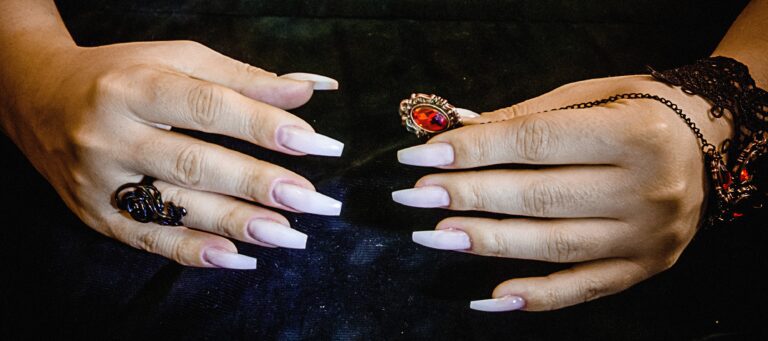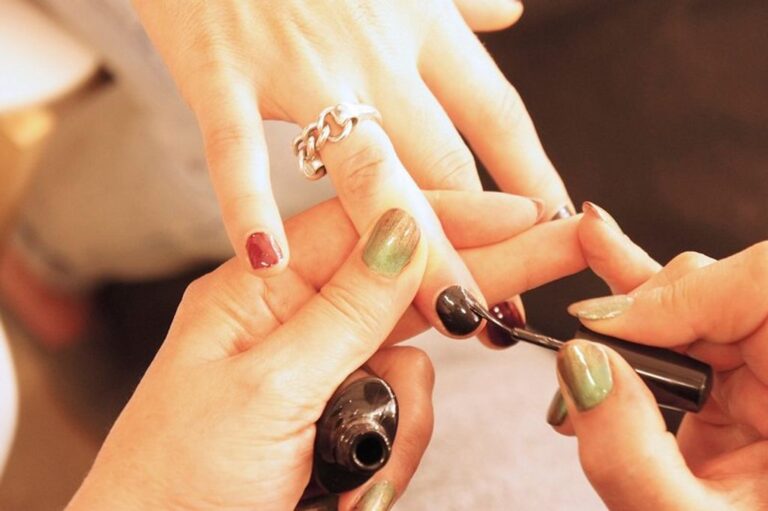“White Wonders: The Science Behind White Nails”
White nails can be an indicator of various health conditions and nutritional deficiencies. Understanding the science behind white nails, including their anatomy, causes, and types of conditions, is crucial for maintaining overall nail health. Additionally, the role of diet and nutrition, as well as the link between white nails and medical conditions, plays a significant role in diagnosing and addressing white nail issues.
Key Takeaways
- White nails can be a sign of underlying health issues.
- Diet and nutrition play a significant role in maintaining healthy nails.
- Different medical conditions can cause white nail discoloration.
- Regular monitoring of nail health is important for early detection of potential health concerns.
- Consulting a healthcare professional is essential for diagnosing and treating white nail conditions.
Understanding White Nails

The Anatomy of Nails
Nails are not just a canvas for color and artistry; they are complex structures that play a significant role in our tactile abilities and overall health. The anatomy of a nail can be broken down into several key components. The nail plate is the hard, translucent part of the nail, made of keratin. Underneath lies the nail bed, which is rich in blood vessels and nerves, giving the nail its pinkish hue.
Cuticles serve as a protective barrier at the base of the nail, while the lunula, the crescent-shaped whitish area at the base of the nail plate, is often an indicator of nail health. The growth of nails begins in the nail matrix, an area under the skin at the nail’s base, which is why maintaining the health of this area is crucial for strong, healthy nails.
Keeping nails clean and moisturized is essential for preventing infections and maintaining the integrity of the nail structure.
Understanding the anatomy is vital for identifying changes that may indicate health issues, such as the development of white nails. Various conditions can manifest as white spots or discoloration on the nails, each with its own set of causes and implications.
Causes of White Nails
White nails can be attributed to a variety of factors, ranging from the benign to the indicative of underlying health issues. One common cause is minor trauma to the nail, which can occur without a person even noticing. This can lead to small, isolated white spots known as leukonychia.
Another factor is the prolonged use of nail polish. The chemicals in some polishes and removers can cause discoloration or damage to the nail bed, leading to a white appearance. It’s important to give nails a break from polish and to use nourishing treatments.
- Nutritional deficiencies: Certain nutrients are vital for nail health, and a lack of them can manifest as white nails. For example, deficiencies in zinc or calcium may lead to discoloration.
Tip: To maintain healthy nails, ensure a balanced diet and consider a break from nail cosmetics if you notice changes in nail color or texture.
Types of White Nail Conditions
White nails can manifest in various forms, each with its own set of characteristics and potential implications for overall health. Some of the common types of white nail conditions include:
- Leukonychia: This condition is characterized by white spots or streaks on the nails, often caused by minor trauma or injury to the nail matrix.
- Terry’s nails: A condition where the nails appear mostly white with a narrow pink band at the top, which can be associated with liver disease, congestive heart failure, or diabetes.
- Onychomycosis: A fungal infection that leads to thickened, brittle, and discolored nails, including white patches.
It’s important to note that not all white nail conditions are a cause for concern. However, persistent or widespread changes to nail color should be evaluated by a healthcare professional to rule out underlying health issues.
Tip: Regular observation of your nails can help in the early detection of changes that may indicate health problems. Pay attention to any new or unusual patterns forming on your nails and consult with a doctor if they persist.
The Role of Diet and Nutrition

Impact of Diet on Nail Health
The correlation between diet and nail health is undeniable. Nails, much like other parts of the body, require a variety of nutrients to maintain their strength and appearance. A well-balanced diet rich in vitamins, minerals, and proteins is essential for healthy nail growth. For instance, protein is the building block of nails, and a deficiency can lead to weak, brittle nails.
- Essential nutrients for nail health include:
- Biotin: Known to strengthen nails and promote growth.
- Iron: Prevents spoon-shaped nails and ridges.
- Zinc: Aids in nail tissue growth and repair.
- Vitamin C: Essential for collagen production, which benefits nail strength.
Tip: Consistently including these nutrients in your diet can prevent white nail conditions and improve overall nail health.
It’s important to recognize that certain diets, like the keto diet, can have varied effects on individuals. While some may notice improvements in nail health, others might experience negative changes. Monitoring your nail condition can provide insights into how your diet is affecting your nail health.
Nutrient Deficiencies and White Nails
White nails can often be a sign of underlying nutrient deficiencies. Essential vitamins and minerals are crucial for maintaining the strength and health of nails. A lack of certain nutrients can lead to the development of white spots or streaks on the nails, a condition known as leukonychia. While these spots are usually harmless, they can sometimes indicate a more serious deficiency.
Zinc and calcium are two minerals that play a significant role in nail health. A deficiency in zinc can manifest as white spots on the nails, and insufficient calcium intake may lead to brittle nails that are prone to whiteness. Additionally, a lack of iron can cause pale nails that may appear whiter than usual.
It is important to consider dietary sources of these nutrients or discuss supplementation with a healthcare provider if white nails persist.
Tip: Consistently including a variety of nutrient-rich foods in your diet can help prevent the occurrence of white nails due to deficiencies.
Medical Conditions and White Nails

Link Between White Nails and Health Conditions
White nails can be an indication of underlying health conditions such as anemia, liver disease, malnutrition, or poor circulation. It’s important to pay attention to changes in the color and texture of your nails as they can provide valuable insights into your overall health. If you notice persistent white nails, consult a healthcare professional for proper diagnosis and treatment.
Diagnosing White Nail Conditions
The process of diagnosing white nail conditions involves a careful examination of the nails, as well as a review of the patient’s medical history and symptoms. To determine the underlying cause of white nails, healthcare providers may perform a variety of tests. These can include blood tests to check for nutrient deficiencies or infections, and in some cases, a biopsy of the nail or nail bed may be necessary.
When suspecting a nutritional deficiency, the following nutrients are commonly evaluated:
- Iron
- Zinc
- Calcium
- Vitamin B12
It’s crucial for patients to provide a comprehensive account of their dietary habits, as well as any recent changes in their health or medication. This information can be pivotal in identifying the cause of white nails.
Tip: Always inform your healthcare provider about any supplements or medications you are taking, as these can sometimes affect the appearance of your nails.
In cases where a systemic condition is suspected, additional diagnostic procedures may be warranted. These might include imaging studies or specialized blood tests to assess for conditions such as liver disease, kidney dysfunction, or heart problems. Understanding the exact cause is essential for effective treatment and management of white nail conditions.
If you’re concerned about the appearance of white nails, it could be a sign of an underlying medical condition. White nails can be associated with various health issues, including liver disease, anemia, and fungal infections. It’s important to consult a healthcare professional for an accurate diagnosis and appropriate treatment. At NAILinspire.com, we provide a wealth of information on nail health, care, and design. Visit our website to explore our extensive nail art design library and discover tips for maintaining healthy and beautiful nails.
Frequently Asked Questions
What are the common causes of white nails?
Common causes of white nails include trauma, fungal infections, and certain medical conditions.
Can white nails be a sign of a serious health condition?
Yes, white nails can be associated with serious health conditions such as liver disease, kidney disease, and anemia.
How can I prevent white nail conditions?
You can prevent white nail conditions by practicing good nail hygiene, avoiding trauma to the nails, and maintaining a healthy diet.
Are there different types of white nail conditions?
Yes, there are different types of white nail conditions, including leukonychia, Terry’s nails, and half-and-half nails.
What role does diet play in the health of nails?
Diet plays a significant role in nail health, as nutrient deficiencies can contribute to white nail conditions.
When should I seek medical attention for white nails?
You should seek medical attention if you notice persistent white discoloration of the nails, especially if accompanied by other symptoms.







